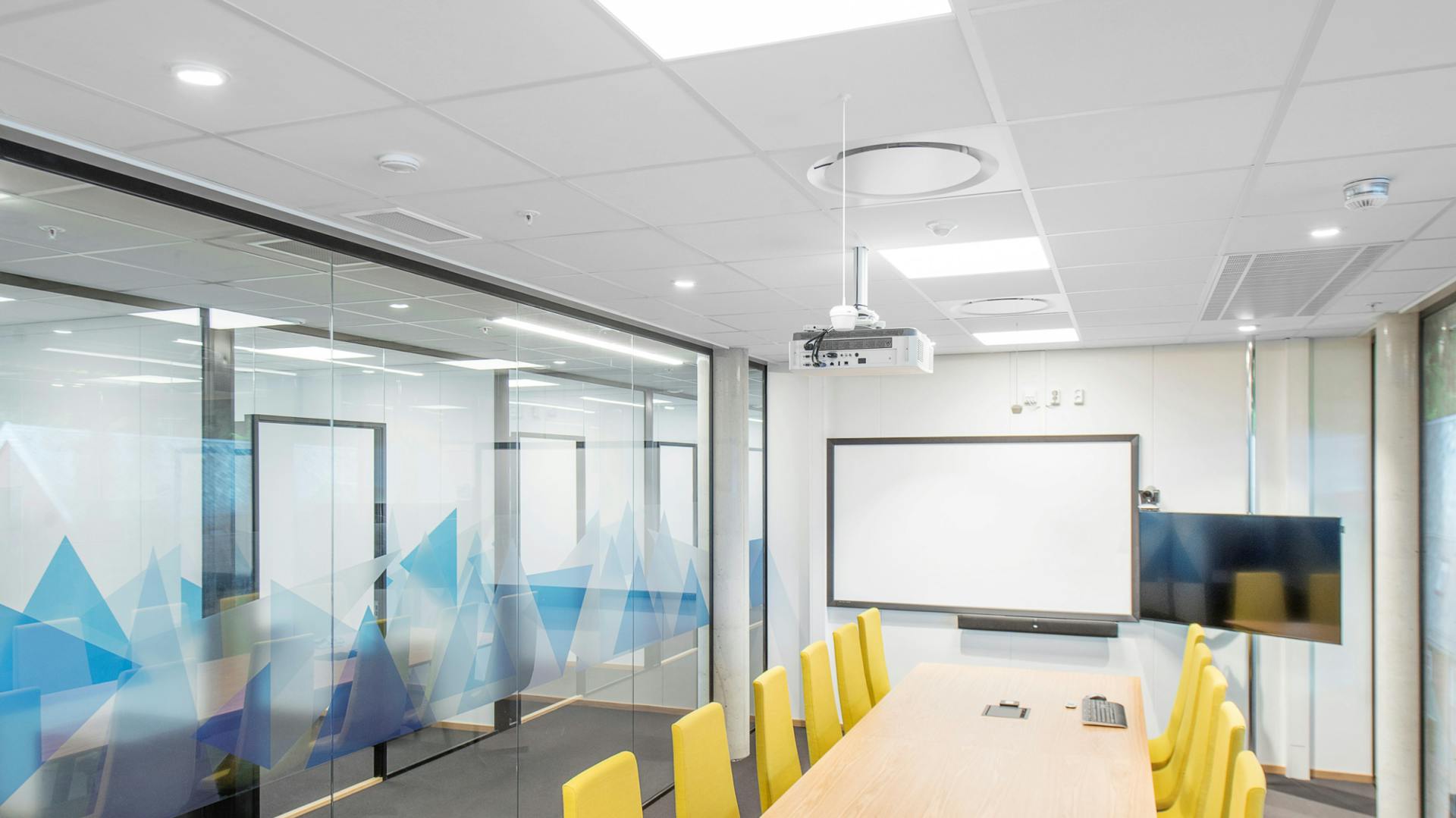MikeFromNorway
Member
- Joined
- Dec 22, 2021
- Messages
- 63
- Likes
- 48
I'd like you're opinions on roof treatment in a acousticly deacent living room.
Size 8x5meters, where 4x5m is the designated music area. With listening postion around 3,5m from front wall.
I want to treat half the rooms ceiling. Its divided by construction into +/-120cm blocks, running 4m, in total 4.
Planning on removing the old ceiling material, install spots and white acoustic matts from Rockfon/Glava or similar.
I have around 20cm space before running into the wooden floor in the attic.
So the q-s are.
1) How much of the ceiling should I treat?
2) What do i choose? the Rockfon comes in similar material in thickness from 15mm-50mm. The absorbtion caracteristics are similar, but the room-room absorbtion is better the thicker the absorbtion material is (which is not important/not an issue for me).
3) Do I leave the space above the insulation plates empty?
Example:

 www.rockfon.no
www.rockfon.no
Size 8x5meters, where 4x5m is the designated music area. With listening postion around 3,5m from front wall.
I want to treat half the rooms ceiling. Its divided by construction into +/-120cm blocks, running 4m, in total 4.
Planning on removing the old ceiling material, install spots and white acoustic matts from Rockfon/Glava or similar.
I have around 20cm space before running into the wooden floor in the attic.
So the q-s are.
1) How much of the ceiling should I treat?
2) What do i choose? the Rockfon comes in similar material in thickness from 15mm-50mm. The absorbtion caracteristics are similar, but the room-room absorbtion is better the thicker the absorbtion material is (which is not important/not an issue for me).
3) Do I leave the space above the insulation plates empty?
Example:

Rockfon Blanka® dB 35| Ekstra lydabsorpsjon og lydisolering
Skap fleksible kontorlandskaper. Akustikkhimlinger kombinerer lydisolering rom til rom med god lydabsorpsjon. 25 mm kjerne av steinull | Rockfon himlingsplater.
Last edited:
